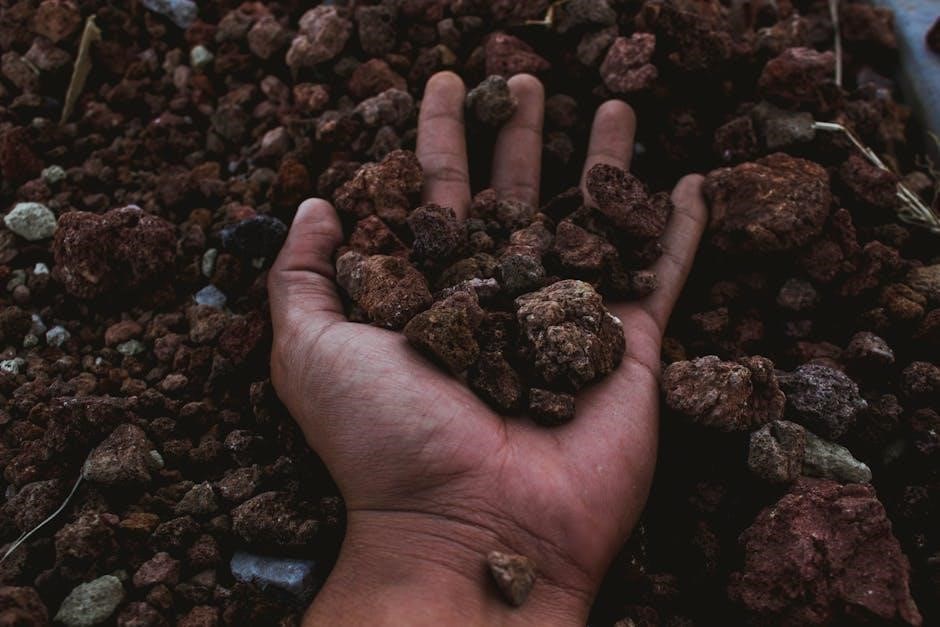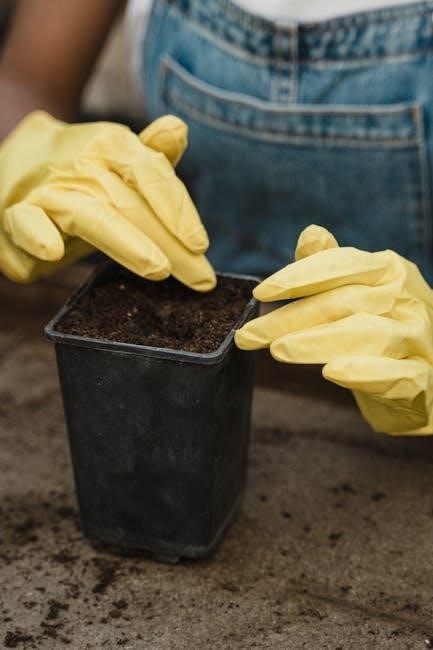Soil compaction is a process that involves densifying the soil to increase its stability and strength using various methods and techniques with hand tools and equipment properly․
Importance of Compacting Soil
Compacting soil is crucial for various construction and landscaping projects as it helps to increase the soil’s stability and strength, reducing the risk of erosion and settlement․
Proper compaction also improves the soil’s load-bearing capacity, making it suitable for supporting heavy structures and vegetation․
Moreover, compacting soil helps to prevent water accumulation and reduces the risk of soil-related problems, such as soil collapse and landslides․
By compacting the soil, individuals can create a stable and durable base for their projects, ensuring a long-lasting and safe outcome․
Additionally, compacting soil manually can be a cost-effective and efficient method, especially for small-scale projects, allowing individuals to achieve professional results without incurring high costs․
Overall, the importance of compacting soil cannot be overstated, as it plays a critical role in ensuring the stability and longevity of various projects․
Methods of Compacting Soil
Manual compaction methods include using hand tools and equipment like tampers and rollers effectively․
Hand Tamper Method
The hand tamper method is a simple and effective way to compact soil manually, especially for small areas like flower beds or garden paths․ This method involves using a hand tamper, which is a heavy metal plate attached to a long handle․ To use a hand tamper, start by watering the soil to make it more pliable, then use the tamper to apply even pressure to the soil, working in sections to ensure complete coverage․ The hand tamper method is ideal for compacting soil in tight spaces where larger equipment cannot reach․ It is also a cost-effective and environmentally friendly option, as it does not require the use of heavy machinery or fuel․ By using a hand tamper, you can achieve the desired level of compaction and create a stable and even surface for your plants to grow․ This method requires some physical effort, but it is a great way to compact soil manually․
Using a Lawn Roller
Using a lawn roller is another effective method for compacting soil manually, especially for larger areas like lawns or gardens․ This method involves filling the lawn roller with water or sand to add weight, then rolling it over the soil to apply pressure․ The weight of the roller helps to compress the soil, removing any air pockets and creating a dense and even surface․ To achieve the best results, it’s recommended to roll the lawn roller in multiple directions, overlapping each pass to ensure complete coverage․ The lawn roller method is ideal for compacting soil in areas where a hand tamper may not be practical, and it can be used in conjunction with other methods to achieve the desired level of compaction․ By using a lawn roller, you can create a smooth and even surface that is perfect for planting or installing pavers, and it is a great way to compact soil manually with minimal effort․
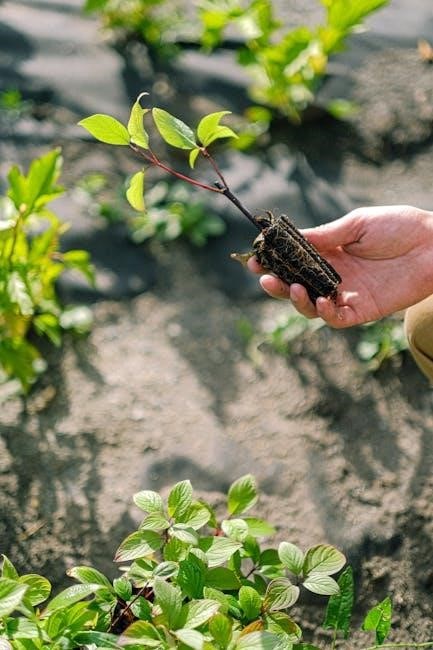
Testing Soil Moisture
Soil moisture testing involves crushing a sample to check for desired levels and optimal compaction conditions manually always․
Checking for Desired Compaction Levels
To check for desired compaction levels, a simple method can be used, which involves crushing a small soil sample in your hand to determine its moisture content and density․ This method is effective for manual compaction and can be used to evaluate the progress of the compaction process․ By regularly checking the soil sample, you can determine if the desired compaction level has been achieved․ The soil should be able to hold its shape when molded, but crumble easily when pressed․ If the soil is too moist, it will not crumble and will stick together, indicating that it needs to be dried out before compaction can continue․ By using this method, you can ensure that the soil is compacted to the desired level, which is essential for stability and strength․ Proper compaction is crucial for various applications, including construction and landscaping projects․
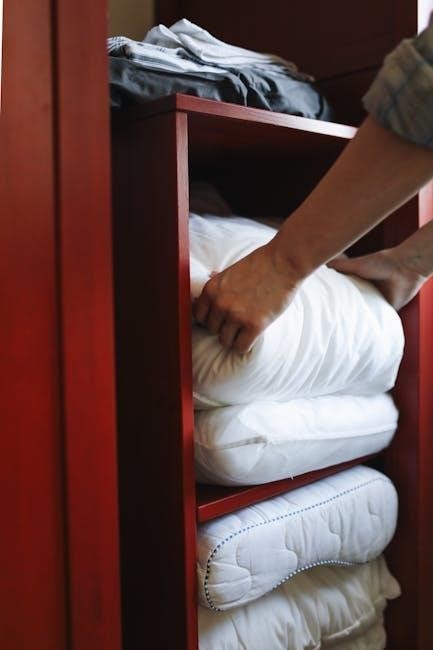
Equipment and Techniques for Compaction
Various equipment and techniques are available for soil compaction purposes including rollers and rammers for effective results always․
Selecting the Right Compaction Equipment
Selecting the right compaction equipment is crucial for effective soil compaction, different types of soil require different approaches and equipment, cohesive clay soils require force while sandy soil requires vibratory compactors․
The size of the area to be compacted also plays a significant role in choosing the right equipment, larger areas require heavier equipment such as rollers and rammers, while smaller areas can be compacted using hand tools․
It is essential to consider the type of project and the desired level of compaction when selecting equipment, for instance, a lawn roller or a hand tamper can be used for small-scale projects․
Proper selection of equipment ensures optimal compaction, reduces the risk of over compaction, and saves time and resources, it also helps to achieve the desired results and prevent potential problems․
Effective compaction equipment selection is critical for achieving the desired outcome, and it is necessary to consider all factors before making a decision, to ensure the best possible results․
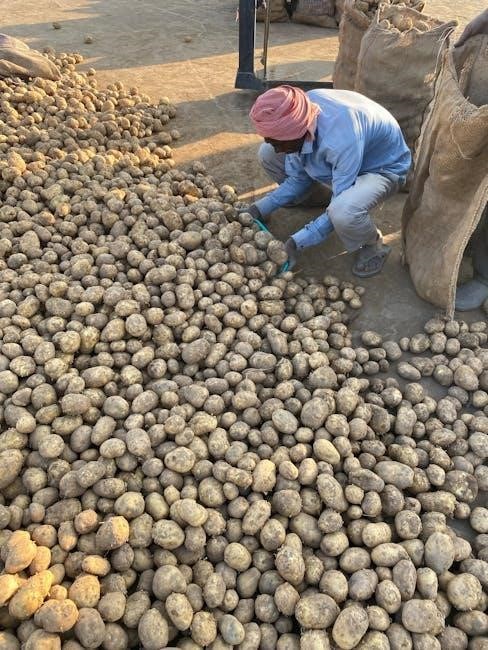
Common Mistakes to Avoid
Avoiding over compaction is essential to prevent soil breakdown and weakness, using proper techniques and equipment is necessary to achieve optimal results and prevent mistakes manually always․
Over Compaction and its Effects
Over compaction occurs when the soil is densified too much, leading to a breakdown in its structure and a reduction in its support capability․ This can happen when too much force is applied to the soil, causing the particles to separate and the soil to become weak․ The effects of over compaction can be detrimental to the soil’s overall health and stability․ It can lead to a reduction in the soil’s permeability, making it difficult for water and air to penetrate, and can also cause the soil to become more prone to erosion․ Furthermore, over compaction can also affect the soil’s ability to support plant growth, making it difficult for roots to penetrate and for plants to thrive․ It is essential to avoid over compaction when compacting soil manually to prevent these negative effects and ensure the soil remains healthy and stable․ Proper techniques and equipment must be used to achieve optimal compaction results․
